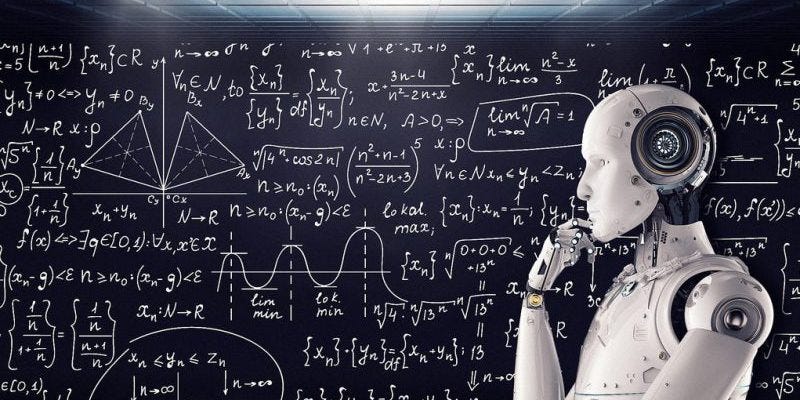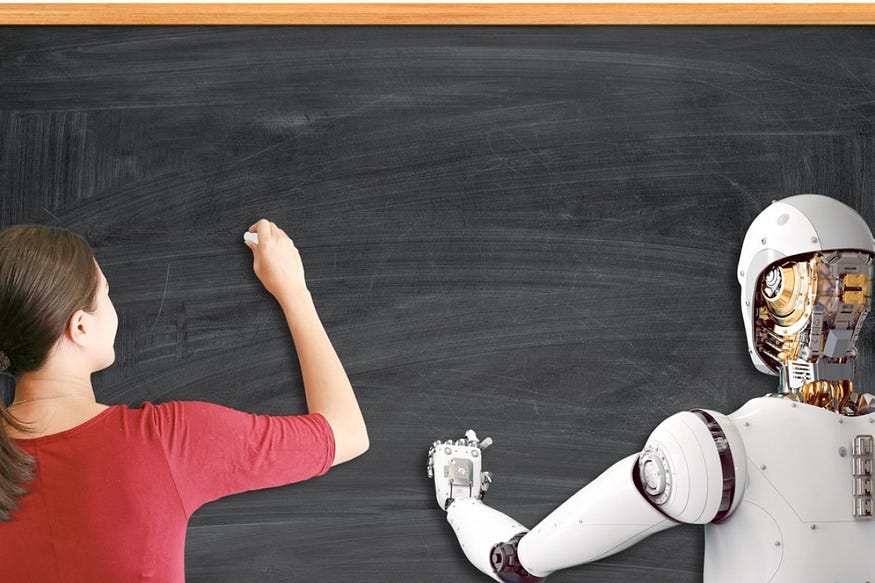
AI Schools — The Schools of the Future
Last Updated on July 25, 2023 by Editorial Team
Author(s): Ryan Lynch
Originally published on Towards AI.

The Schools of the Future, AI Schools U+007C Towards AI
Technology is becoming a bigger part of our lives every day. Imagine driving to a new place without your sat-nav, ordering a takeaway without an app, or finding a new place to eat it without a quick search on Google.
Now think about the things you don’t see. How Google orders the billions of results it finds when you ask it “Why is the sky blue?” or “Where is Dubai?” (searched 165,000 and 60,500 times a month on average)?

So What Does Any Of This Have To Do With Schools?
Hang on, I’m not there yet.
In primary school, I always loved maths (like all kids did, right?). I would get bored in maths class waiting in anticipation for the next topic to absorb (can you tell I was one of the cool kids?). But I was terrible at Irish. I couldn’t form a sentence ‘as Gaeilge’ to save my life.
I was in a small school so our class was about 20 people, maybe 22 or 23 at most. We had one teacher trying to teach 11 subjects to all of us. Our teacher tried as best as she could to help the students struggling with each subject to keep up and, as amazing as she was, that was just never going to happen. I excelled at maths, my friend wrote amazing little short stories for English, everyone had their subject. But I never got the hang of “ban” and “bán”. And the guy who struggled in maths never got the hang of algebra.
Is there a point to all this?
Yes, there is. I know, it’s taking me a while to get there but hear me out.
23 kids, all with different abilities and all being taught the same lessons in every subject for the same amount of time. A human teacher can only make so many lesson plans, can’t tailor questions to suit a single student’s ability.
Artificial Intelligence can. What if we had a system that could tailor lessons for each and every student? The teacher would still lead a class, but then every student would be asked questions based on the level they were at. This means that students struggling would have more practice with the basics of a topic to make sure they understood what was going on. And, on the other end of the spectrum, the students that picked up a topic quickly would be given more challenging questions to stop them losing interest, to keep them being challenged, to keep them engaged.
Ok, sounds great but that’s years away, right?
Wrong.

China has already started this, with tens of millions of their students already interacting with artificial intelligence in some form or another. In China, education is like a competitive sport and students and families will look for anything that might give them the slightest edge over everyone else. Is this the way to go?
While experts in the west have been debating over best practices for using AI in the classroom, China dove right in. Educational tech companies have created a billion-dollar market, hoping to be the future of learning.
Maybe it’s time we left behind the ‘one size fits all’ model of teaching. We accepted a long time ago that everyone is different, that everyone learns differently. So why are we still teaching everyone the same way?
The future depends entirely on how we educate the next generation. Can AI help? Or did we get it right before technology took over? What do you think? Is AI the future of education or should we stick with what we know?
Join thousands of data leaders on the AI newsletter. Join over 80,000 subscribers and keep up to date with the latest developments in AI. From research to projects and ideas. If you are building an AI startup, an AI-related product, or a service, we invite you to consider becoming a sponsor.
Published via Towards AI
Take our 90+ lesson From Beginner to Advanced LLM Developer Certification: From choosing a project to deploying a working product this is the most comprehensive and practical LLM course out there!
Towards AI has published Building LLMs for Production—our 470+ page guide to mastering LLMs with practical projects and expert insights!

Discover Your Dream AI Career at Towards AI Jobs
Towards AI has built a jobs board tailored specifically to Machine Learning and Data Science Jobs and Skills. Our software searches for live AI jobs each hour, labels and categorises them and makes them easily searchable. Explore over 40,000 live jobs today with Towards AI Jobs!
Note: Content contains the views of the contributing authors and not Towards AI.














